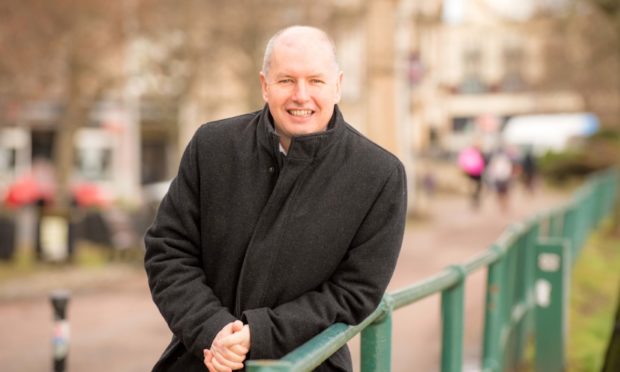Gaelic is in crisis and will collapse as a viable community language within a decade in its main stronghold unless a radical new approach is taken to revitalise it, according to new research published today.
Falling numbers of speakers, lack of everyday use of the language among family and friends and indifference among young people are all helping the decline, the research says.
In what is said to be the most comprehensive social survey on the state of Gaelic communities ever conducted, researchers have studied the use of the language in the Western Isles, Staffin in Skye and in Tiree. In these areas, Gaelic speakers could total just 11,000, most of them over 50.
It argues that if trends continue within the next ten years, most of the communities will be at, or will have entered, the “moribund” phase.
The Gaelic Crisis in the Vernacular Community was compiled by researchers from the University of the Highlands and Islands (UHI) Language Sciences Institute and Soillse, a multi-institutional research collaboration.
Professor Conchúr Ó Giollagáin, UHI professor of Gaelic research, said the Gaelic-speaking communities are “falling apart”.
He said: “It is not being spoken in the families to a large enough level and there is a lack of social use of Gaelic among the young. They don’t see how it is relevant to their lives.
“If we continue along the trajectory we are on at the minute the level of spoken Gaelic in these communities will soon resemble what happened in other parts of the mainland.
“In ten years’ time there will still be Gaelic speakers in the islands, but there won’t be communities of speakers.”
Prof Ó Giollagáin added: “The status quo and the social continuity of Gaelic as a community language are clearly now incompatible. More of the same policy will give more of the same crisis.”
The book recommends establishing a community development trust to run family support schemes and youth groups to set up social networks of Gaelic speakers.
Prof Ó Giollagáin said current polices are trying to develop Gaelic medium education, increase the status of Gaelic in civic society and official bodies and develop the arts, media and academia.
“They are all laudable sectors for support, but supporting them to the detriment of support for the community of speakers is counterproductive.”
The Scottish Government said it is interested in the proposals and look forward to discussing the value of current initiatives and the suggestions to strengthen Gaelic in the islands.
A spokeswoman said: “Gaelic is a vital part of Scotland’s cultural identity and Ministers support efforts to improve access for speakers to learn and use the language.
“We are interested in the proposals in the book and look forward to discussing the value of current initiatives and the new structures suggested to strengthen Gaelic in the islands.
“Although the Gaelic language is in a fragile condition there are a range of policies and interventions in place to promote the learning, speaking and use of Gaelic in the islands and these are constantly kept under review.”
Mairi MacInnes, chairwoman of Bòrd na Gàidhlig said she has not yet read the book: “Our understanding is that one of the key messages from the research is that for the older generation of Gaelic speakers in the islands, Gaelic was and remains the default language of the community. For most younger people, the default language is now English.
“This finding will come as no surprise to anyone who lives in the islands or anywhere else and is a pattern that you will find in minoritised language communities across the globe.”
She said the success of Gaelic medium education has led to the growth in numbers of speakers outwith the Western Isles and added: “Bòrd na Gàidhlig and our partners in the public sector are listening and willing to discuss with island communities what else they want to happen, in addition to the many positive things which are already in place, to encourage greater use of Gaelic in the islands and elsewhere.”
Trend shows a decline towards non-viability
The book says that, within the island communities researched, the social use and transmission of Gaelic is at the point of collapse.
The survey found low levels of Gaelic ability among young island residents and marginal levels of use of the language across different social contexts.
It said there was marginal presence of Gaelic in young people’s experience of primary and secondary schooling and a “general indifference” among young people regarding the place of Gaelic in their lives.
The predominance of English also meant Gaelic was also not being spoken often enough in social networks except among older people.
Census data for 1981–2011 shows a continued decline in the number of Gaelic speakers resident in the islands of the research area.
Of the resident population aged 3 and over, only 52% of people at the 2011 Census reported an ability to speak Gaelic, compared to 80% at the 1981 Census.
There was a net loss of 9,660 Gaelic speakers over the 1981–2011 period. In the decade from 1981 to 1991, the 3–17 age group contracted particularly severely with a fall of 41% in Gaelic speaker numbers.
Trends show a progressive and substantial reduction in Gaelic speaking ability in the Western Isles with the projected Gaelic-speaker population approaching the 45% threshold of non-viability by 2031.
This critical threshold, or moribund phase, would mean Gaelic is largely restricted to marginal aspects of community life, institutional practice and to the elderly.










